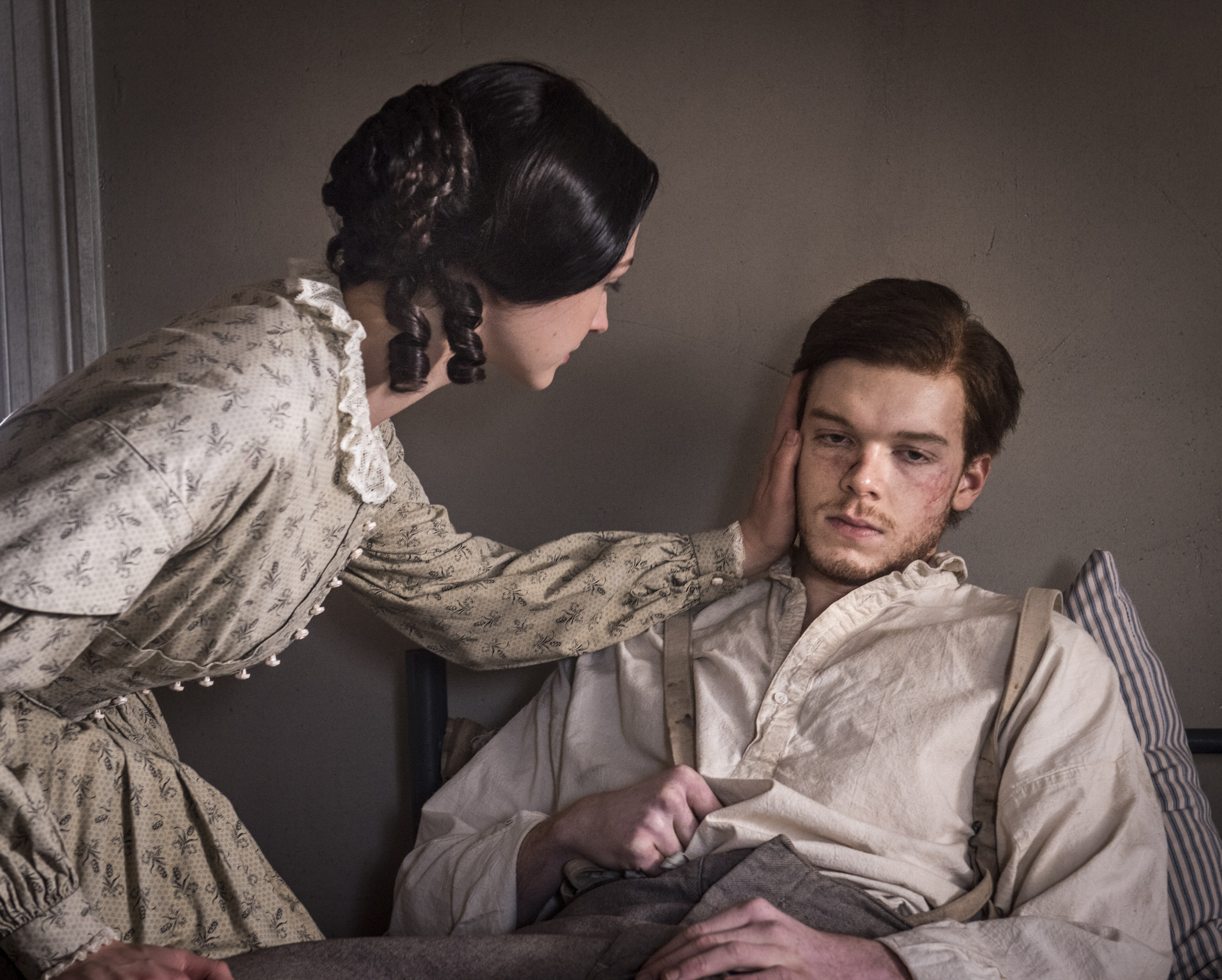
By Rob DeHart
Tennessee State Museum
Mercy Street exposes the psychological impact of war through the moving story of Confederate soldier Tom Fairfax who arrived at the hospital traumatized by seeing a friend die in battle. Though Tom seems to improve, he eventually takes a drastic step when given the opportunity to escape the hospital and return to his unit.
 Today Tom would likely be diagnosed with post-traumatic stress disorder. PTSD arose as a term to describe the psychological symptoms experienced by some Vietnam War soldiers returning from military combat. Symptoms included anxiety, insomnia and flashbacks to combat situations triggered by everyday activities. Conditions similar to these have gone by other names in previous wars: During World War II soldiers suffered from “combat fatigue”; during World War I the diagnosis was “shell shock.”
Today Tom would likely be diagnosed with post-traumatic stress disorder. PTSD arose as a term to describe the psychological symptoms experienced by some Vietnam War soldiers returning from military combat. Symptoms included anxiety, insomnia and flashbacks to combat situations triggered by everyday activities. Conditions similar to these have gone by other names in previous wars: During World War II soldiers suffered from “combat fatigue”; during World War I the diagnosis was “shell shock.”
Did Civil War veterans also suffer from PTSD? It seems quite likely they did, but wartime records do not give us a lot to go on. Civil War doctors surmised that patients such as Mercy Street’s Tom Fairfax simply suffered from “nervousness.” A worse outcome for patients was when doctors labeled them as “malingerers” or “hospital rats” who were avoiding military duty by faking illness. A systematic approach to understanding mental illness did not begin to develop until the late 19th century, thus details about soldiers’ psychological status are sparse in Civil War medical records.
For example, the surgeon for the Confederate 11th Tennessee Infantry Regiment attributed the July 1861 death of Pvt. S.W. Tucker to the “effects of measles.” However, the surgeon went on to write: “This man died of fright from every circumstance connected with his case.” The doctor recognized his patient was afflicted by something other than measles, but he had no way to diagnose or treat the man.

Only recently have historians began looking at records of Civil War veterans admitted to mental health hospitals (then known as “insane asylums”) to see if they can determine what “died of fright” really means. Patients who were known to be veterans had symptoms that were consistent with PTSD, but drawing broad conclusions about their diagnoses is challenging. Two-thirds of Civil War soldiers’ deaths occurred from disease in camps and hospitals. How much non-combat related trauma contributed to the poor mental health of some Civil War veterans?
One thing is certain – the Civil War was a life-altering event for many people on the battlefield and the home front. It is reasonable to assume that mental stress manifested itself in participants in many different ways both during and after the war. There is still much historical research to be done in this area, but perhaps the time is right for us to finally hear their stories.
Mercy Street concludes 9 p.m. Sunday, Feb. 21, with a midweek encore Thursday, Feb. 25, at 9 p.m. Inside Mercy Street, a behind-the-scenes feature about the series, airs 6:30 p.m. Saturday, March 12.
Rob DeHart is a curator at the Tennessee State Museum in Nashville where he specializes in technology and cultural history. DeHart received his M.A. in public history from Middle Tennessee State University and is a peer reviewer for the American Alliance of Museums.
